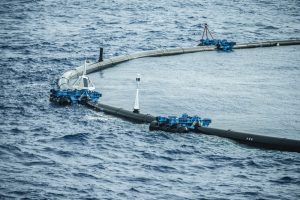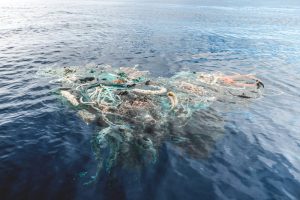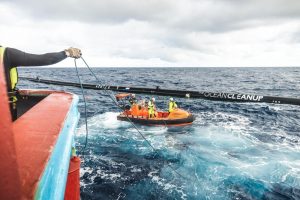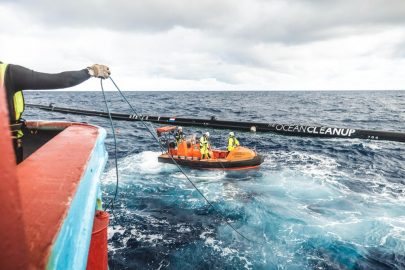
It is now around two and a half months since the Ocean Cleanup Project installed its first trash-catching barrier in the Great Pacific Garbage Patch, and things are not going exactly to plan. The team has encountered some trouble getting the system up to the required speeds and now inspections of the approximately 600-meter-long barrier have uncovered a problematic break in the chain, prompting a return to shore for repairs.

The Ocean Cleanup Project’s system is a giant U-shaped barrier designed to sweep through the Great Pacific Garbage Patch and collect plastic waste. But about a month after it was towed into position, the team found it was struggling to maintain the speeds needed to gather the trash. Then in December, it reported that its initial solution to the problem hadn’t exactly done the trick, and it was returning to the drawing board.

Now, another problem has emerged. The team says that during a regular inspection it found one of barrier sections tacked onto the main 580-meter-long section had detached as a result of a fracture. The cause is believed to be a combination of material fatigue and stress, but the main section and the 18-meter end section are intact and no material has been lost. The incident does mean that the system’s sensors and satellite communication modules are now compromised, so it’s been decided to bring it in for repairs.

If there’s a silver lining in this, it’s that it will be easier for the team to make upgrades on shore that might solve the earlier plastic-retention issue. And although it hasn’t been out at sea for as long as it hoped, it does already have terabytes of data on how the system interacts with plastic, which will be helpful as it continues making its improvements. Despite its troubles, it has also managed to haul in around 2,000 kg of plastic waste so far.

The Ocean Cleanup Project has its share of naysayers and outright critics, who never believed the system would work or that it would only serve to further damage the marine environment. Despite the latest setback, CEO Boyan Slat is adamant this is a speed hump rather than a road block, stating he is confident these “teething problems are resolvable,” and that the cleanup can continue in 2019.

Source: newatlas
Ask me anything
Explore related questions





